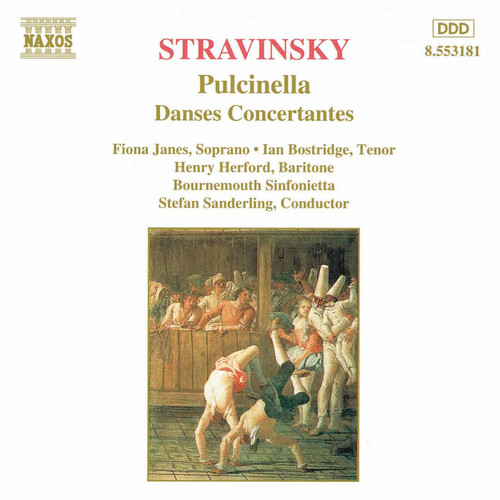Show results for
Deals
- 4K Ultra HD Sale
- Action Sale
- Alternative Rock Sale
- Anime sale
- Award Winners Sale
- Bear Family Sale
- Blu ray Sale
- Blues on Sale
- British Sale
- Classical Music Sale
- Comedy Music Sale
- Comedy Sale
- Country Sale
- Criterion Sale
- Electronic Music sale
- Fantasy Film and TV
- Folk Music Sale
- Hard Rock and Metal Sale
- Horror Sci fi Sale
- Jazz Sale
- Kids and Family Music sale
- Kids and Family Sale
- Metal Sale
- Music Video Sale
- Musicals on Sale
- Mystery Sale
- Naxos Label Sale
- Page to Screen Sale
- Paramount Sale
- Pop and Power Pop
- Rap and Hip Hop Sale
- Reggae Sale
- Rock and Pop Sale
- Rock Legends
- Soul Music Sale
- TV Sale
- TV Sale
- Vinyl on Sale
- War Films and Westerns on Sale

Pulcinella
- Format: CD
- Release Date: 1/23/1996

Pulcinella
- Format: CD
- Release Date: 1/23/1996
- Composers: Igor Stravinsky
- Conductors: Stefan Sanderling
- Orchestras: Bournemouth Sinfonietta
- Performers: Fiona Janes, Henry Herford, Ian Bostridge
- Label: Naxos
- UPC: 730099418126
- Item #: NAX941812
- Genre: Classical
- Release Date: 1/23/1996

Product Notes
Stravinsky has been compared to his near contemporary Picasso, the painter who provided décor for Pulcinella and who through a long career was to show mastery of a number of contrasting styles. Stravinsky's earlier music was essentially Russian in inspiration, followed by a style of composition derived largely from the eighteenth century, interspersed with musical excursions in other directions. His so-called neo-classicism coincided with the beginning of a career that was now international. The initial enthusiasm for the Russian revolution of 1917 that had led even Dyagilev to replace crown and scepter in The Firebird with a red flag, was soon succeeded by distaste for the new régime and the decision not to return to Russia. Stravinsky wrote his Danses concertantes in Hollywood in 1941 and early 1942, in response to a commission from the Wemer Janssens Orchestra, which gave the first performance in Los Angeles on 8th February under the direction of the composer. Although originally intended for concert use, the Danses concertantes were planned in balletic sequence, with an introductory and concluding march to bring the dancers on and off the stage and the necessary variety, not only in the Pas d' action and Pas de deux but also in the theme and variations, three of the latter based on an ascending semitone step. In 1944 the dances were choreographed by Balanchine for the Ballet russe of Monte Carlo. The style of writing reflects that of the earlier ballet Jeu de cartes.

